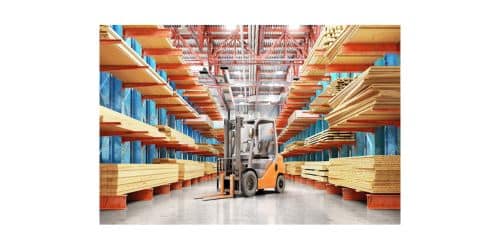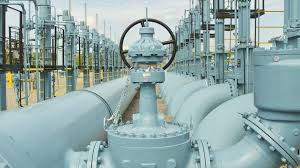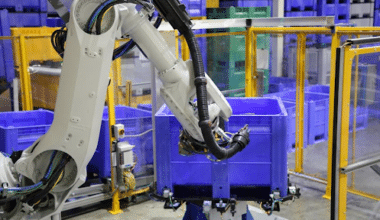The goal of a warehouse is to keep track of and protect a company’s stock so that it can be used for budgeting, manufacturing, or selling. It evolved into something that plays a far bigger role in the global strategy of modern businesses. Therefore, it is crucial to carefully plan a warehouse design or layout. This article explains warehouse layout, its design, warehouse layout planning, and optimizing warehouse layout.
Warehouse Layout
A warehouse layout is the planned layout of a warehouse that is intended to make the warehouse’s activities more efficient as a whole. The optimal configuration needs to be able to facilitate an improvement in the flow of production and distribution.
The first step in creating an installation is planning the layout of a warehouse. Even though this seems like an easy question, it is hard to figure out. This piece talks about the most important things to think about when designing.
To design the ideal warehouse for your needs, you must first determine exactly what they are. With a warehouse layout, your business can adjust how people move through the warehouse and make it easier for people to find things. It is very boring to watch how a building works from start to finish. Because of this, some companies use software to run their warehouses to make the process easier. Software for warehouse management makes it easier to see how the warehouse works as a whole and keep track of how goods move between locations.
Warehouse Layout Design
There are a few basic warehouse designs, like U-shaped, I-shaped, and L-shaped ones:
#1. U-Shaped Design
Best for: Any warehouse size
The U-shaped form frequently places loading and shipping spaces side by side. Behind shipping is the loading and pickup section, where reception is normally located. The storage area occupies the entire back of the facility. The U-shaped core holds the most popular products.
#2. I-Shaped Design
Best for High-volume warehouses
This warehouse design contains storage in the center with loading and unloading and shipment at both ends.
#3. L-Shaped Design
Best for: Small to midsize warehouses
This design layout has an L-shaped traffic flow. Loading, reception, shipping, and picking are on opposite sides. Products are stored elsewhere.
How to Design a Warehouse Layout.
The first step in building the perfect warehouse layout is to identify all the components that must work together. The optimal warehouse design makes full use of available space while yet accommodating all of the functions that take place there. The following includes how to design a warehouse layout.
#1. Create a Warehouse Blueprint
Before making any judgments on the warehouse layout, take the time to design a visual aid that you can use to experiment with the available space. This includes putting up signs to show where the shipping and receiving docks can go, taking into account how many trucks you want to fill at once. This option will help you look at your warehouse as if it were a blank canvas.
#2. Start Fitting Components
After designing a warehouse blueprint and collecting measurements, you can start making plans for how different warehouse components can be put up. This includes workplaces, staff quarters, moving and stationary storage, staging areas, and shipping and receiving docks. All major areas should be taken into account, including assembly lines, manufacturing materials, work benches, conveyor belts, and other equipment that needs room.
#3. Pick the Flow That Fits Your Location
After you learn about the different warehouse flows and take a good look at your space, you may have a good idea of which plan will fit your needs best.
The U-shaped warehouse flow may be useful for keeping the shipping and receiving areas close together. The I-shaped warehouse flow may be preferable if you prefer an in-and-out process while minimizing space utilization. If you have a warehouse with a distinctive shape, the L-shaped warehouse flow works well. Whether you choose a popular flow or go your own way, this stage is critical to complete before making any big changes to the general layout.
#4. Gather Equipment
After figuring out which flow works best for your needs, it’s time to buy and put together all the tools you’ll need to make warehouse moves faster and easier. This includes forklifts, shelving, bins, pallet racks, rolling stairs, picking and packing stations, technology to help with the process, and other machines that will help the warehouse run smoothly.
#5. Test Your Plans
When in doubt, put your recommended strategy to the test. Walk through the warehouse to find the best way for people to move around before putting equipment in place. Make sure to think about what the warehouse staff and other workers who are involved in the workflow think and worry about.
Warehouse Layout Planning
The layout and style of a warehouse’s floor plan are very important to how well it works. Key steps to an effective warehouse layout design are making a plan, making the most of the area, choosing the right equipment, putting in place good workflow strategies, and testing traffic flow.
Consider your demands before beginning the layout planning process for your warehouse floor plan, from space usage, storage alternatives, and production equipment to aisle layout and production area processes. Also, think about your business’s inventory management systems. The way your business is set up will affect how well you can handle inventory. When planning out your warehouse, take the following actions:
#1. Create a Warehouse Diagram
A good warehouse layout starts with a correct 2D picture, which you can plan with paper schematics or design tools.
A copy of your warehouse’s blueprint is the best way to make a real plan. If you rent, your owner may be able to give you a plan to follow. If you can’t find a blueprint, it’s easy to make a schematic of your building on grid paper. Plan your setup so that each square on the grid paper is the same size as one square foot in your warehouse. Your project’s spatial relationships will then correspond to the physical space you have.
#2. Optimize Your Warehouse Space
In order to more effectively plan the floor of your warehouse, you will need to find out how much room it is capable of holding. First things first, you need to figure out how much space you have for storage. After that, you can make plans for the necessary equipment, divide the workspace into regions for production and workflow, and designate specific locations for storage.
#3. Choose Your Warehouse Equipment
When designing your warehouse layout, consider the quantity and type of storage, shelving, and workplace equipment. Pallet racks, heavy-duty and light-duty shelves, cantilever racks, and bins are all common ways to organize a warehouse. You can buy storage and shelving choices from a dealer or from Alibaba, which has deep discounts. Small amounts can be bought at Amazon, Home Depot, or Lowe’s. You can also choose to buy used tools.
#4. Use Efficient Traffic Flow Strategies
Now that you have a concept of the types of equipment and storage solutions you will utilize for your warehouse, as well as an idea of where everything can fit into your layout, it’s time to work on your detailed schematic. The goal of a warehouse schematic is to make sure that everything is set up in a way that makes traffic move smoothly and increases productivity.
Think about your business by looking at the following needs for using a warehouse:
- Think about how long you and your workers will spend in different parts of your building.
- Identify the places where the majority of the work will be done, whether they be production tools, storage spaces, or workstations.
- Find out what you and your workers will need to move around the warehouse, how things will be gathered from different parts of the warehouse, and what things need to be close by to do daily tasks.
#5. Test Your Warehouse Traffic Flow Plan
The last stage is to test your warehouse traffic flow design before setting up tools, shelves, and tables. To do this, measure the room and put masking tape on the floor to mark where your main units, like shelves, tables, or equipment, will go. You don’t have to do this for every piece, but it’s important to make mockups of key production and process zones.
Optimizing Warehouse Layout
No matter how big stores and distribution centers are, they usually run out of room over time. Almost every brownfield facility will need more floor space at some point because of things like more inventory, more SKUs, acquisitions, mergers, better customer service needs, and more. Many floor plans don’t take things like high-density storage or vertical space into account.
Even though this job can be hard, the good news is that you can optimize your warehouse floor plan with the right mix of automation and space use. Here are five suggestions to help you optimize the layout of your warehouse.
#1. Utilize Your Vertical Space
When optimizing your warehouse layout, one of the first things you should consider is how well you’re currently utilizing your vertical space. Most of the time, the space above warehouse activities isn’t used, but it could be used to improve efficiency.
#2. Leverage WES software
Warehouse execution system (WES) software is very helpful for any business activity. Horizon WES coordinates your building and all of its different zones to balance and distribute labor and improve the performance of equipment. This makes your business more efficient. The WES will eliminate automation islands and replace them with a single, cohesive, and efficient system.
#3. Optimize Your Storage
You might be surprised at how much space you can save when optimizing most of your warehouse layout. By putting in an AS/RS system in your warehouse, you can get rid of the need for workers to use a forklift or other machine to manually get things from storage. Autonomous mobile robots (AMRs), shuttles, and other types of AS/RS take up less floor space in a warehouse while storing and retrieving more items. Up to 85% of your floor space can be saved with these goods-to-person AS/RS systems, and labor costs can be cut in half.
#4. Automate Your Warehouse
Modern warehouses must be automated in order to become profit centers and for their companies to prosper. It really comes down to meeting an organization’s business and return on investment (ROI) needs. By using the RightFIT method, you can be sure that the right amount of automation will be planned and put into place. Automation in a building can improve efficiency, help build up instead of out, and save time.
What Is the Layout of a Warehouse?
The layout of the warehouse must show the best way to store and manage the goods that will be stored there. For example, the design of a warehouse that stores raw materials or finished goods. The plan drawing of the building must at least include the following: The warehouse’s structure inside and out.
How Do You Design a Warehouse Layout?
How to design a warehouse floor plan to achieve maximum effectiveness
- Find out what you need and where you’re falling short right now.
- Design a warehouse floor plan that allows for constant flow.
- Set aside room for equipment and workstations.
- Make sure that all of the goods and pallets can be reached.
- Test your factory floor plan before putting it into action
What Is the Correct Flow of a Warehouse?
The most common warehouse layout is a U-shaped product flow. In this layout, the shipping and receiving docks are right next to each other. This implies that both shipping and receiving docks can make use of dock resources like people and equipment for moving things.
What is the Most Popular Warehouse Layout?
U-Shaped Warehouse Layout:
The U-shaped warehouse plan is the most common type of warehouse design, and it’s popular for a number of reasons. This layout is in the shape of a half-circle “U,” with the area for getting packages on one end and the area for sending packages on the other.
What Is an Ideal Warehouse?
The site of the warehouse should be good and easy. It must be close to the place where the goods are made or sold. This helps keep transportation costs down. The warehouse should be made in a way that fits the needs of the product. Goods that go bad quickly, like milk, should have services like refrigerators.
References
Related Articles
- OFFICE LAYOUT: Meaning, Ideas & Guide
- What Is Web Design: Definition, Example, Software, Course & Package
- WEBSITE LAYOUT: Definition. Examples. Ideas. Types & Makers
- WAREHOUSE WORKER: Meaning, Duties, Salary, Resume & Best Shoes for Work
- WHAT IS A WAREHOUSE ASSOCIATE: Definition, Skills, and Responsibilities
- SUBMITTAL CONSTRUCTION: What Is It, Examples, Equipments, Process & Guide






